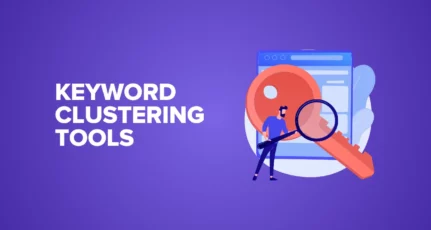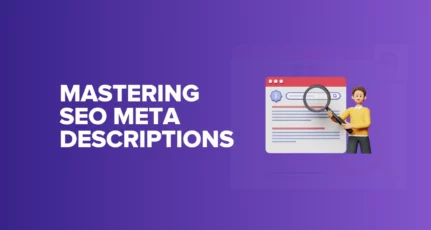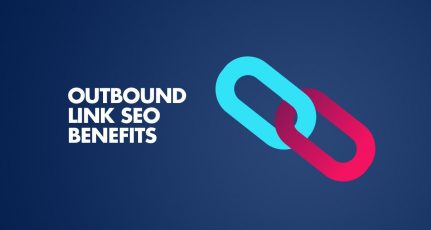SEO is one of the best ways to get consistent organic traffic to your website.
One common consensus is that every piece you publish should be compelling, or otherwise should be useful.
However, creating high-quality content regularly is hard work—it takes time, money, and energy.
What if I told you there’s a way to publish tons of pages faster, allowing you to generate more organic traffic?
Enter programmatic SEO.
Programmatic SEO is a strategy that uses automation and data to create and optimize web pages at scale. It allows you to target thousands of keywords and topics with minimal manual input.
In this guide, I’ll explain what programmatic SEO is and how it works. I’ll also help you figure out if programmatic SEO is a good fit for your site and show you some examples of successful websites that are using programmatic SEO to dominate their niches.
Let’s get started.
What is Programmatic SEO?
Programmatic SEO, also known as pSEO, is a strategy that leverages data and custom APIs to create a large number of landing pages at scale.
Instead of having writers create content for each page, programmatic SEO uses automated tools to generate pages, saving time and cost.
Each page is based on a template that contains the same elements, such as reviews, images, pricing, and more.
Using automated tools and a dataset, variations of the pages can be created, each targeting a specific keyword.
Chances are, you’ve come across websites already using programmatic SEO.
Examples of Programmatic SEO:
Example #1: TripAdvisor Programmatic SEO Strategy
For example, when you search for something travel related such as “Restaurants in Bali”. Or any other variation of the keyword based on the location. One of the websites you’re likely to come across is TripAdvisor.

When you click the link you’ll be redirected to a page listing some of the best restaurants in Bali.

After changing the location, you’ll notice that the page layout and appearance will remain the same.

TripAdvisor does not create these pages from scratch for every location ( city, country, or state). Instead, they use specialized code and a robust database to automatically generate these pages.
Example#2: Zapier Programmatic SEO Strategy
Zapier is an automation platform that allows users to connect different apps and automate workflows.
Zapier uses programmatic SEO to generate massive organic traffic by creating dynamic landing pages for each app it integrates with.
For example, if a user wants to integrate Gmail and Slack, Zapier has a landing page that explains how to do that, the benefits it can bring, and the workflows that can be triggered.

These landing pages are generated automatically based on the app data and the user intent, and they are optimized for search engines with relevant keywords.
By using programmatic SEO, Zapier is able to scale its content production and reach a large audience of potential customers who are searching for ways to automate their tasks and workflows.
Example #3 :RocketReach Programmatic SEO Strategy
RocketReach is a platform that helps users find contact information for people they want to connect with. The tool leverages Programmatic SEO to create thousands of profile pages automatically.
For instance, if you search “Ahrefs CEO contacts” on Google, you will find one of the pages that rank on the first page is from RocketReach.
The platform generates a brief bio about the prospect and also provides links to some of their social media accounts.

RocketReach uses Programmatic SEO to generate these pages automatically, instead of doing it manually
Example #4:Nomad List Programmatic SEO Strategy
This platform helps digital nomads find their ideal living and working destinations. They use programmatic SEO to generate dynamic pages for thousands of cities, each filled with relevant cost-of-living data, internet speeds, and safety information. This massive content library caters to long-tail keywords like “cheapest cities for remote workers” or “best places to travel with fast internet.”

What’s the Difference Between pSEO and Regular SEO
Both programmatic SEO and regular SEO share the same objective of generating organic traffic but take different approaches.
Regular SEO focuses more on a long-term strategy. With this type of SEO, you focus on publishing high-quality content that offers value to readers and then optimizing it around keywords. This process takes time and requires extensive research to produce unique and helpful content.
Meanwhile, Programmatic SEO is about generating content at scale. It still uses some of the common SEO tactics, such as keyword research, and understanding search intent however, instead of writing completely original content, programmatic SEO uses automation to fill in data into landing page templates.
This approach is ideal for generating pages that drive conversions at a large scale and works best when targeting transactional keywords.
How to Implement Programmatic SEO on Your Website
Programmatic SEO implementation revolves around three key fundamentals:
- Scalable keywords – starts with thorough keyword research, focusing on low-competition and high-intent keywords. These keywords are used to create dynamic templates that match the user’s query and intent, increasing relevance and conversions.
- High-quality database — leverages various sources of data, such as databases, feeds, or APIs, to populate the templates with unique and informative content.
- Automation — involves syncing your database with your CMS or website builder to publish the landing pages.
Truth is, Programmatic SEO can be complicated for a typical SEO. You need to collect massive data, generate a massive number of pages, and sync them to your CMS.
Crafting templates for dynamic content generation often requires coding knowledge, especially for complex scenarios involving data integrations and automation. This can be overwhelming for most SEOs with less technical skills.
In this section, we’ll dive deep into how to implement programmatic SEO on your website.
Step #1: Find Your Seed Keywords and Modifiers
The first step in programmatic SEO is to identify a broad search term relevant to your niche. You can then use this term to generate thousands of long-tail keywords by adding modifiers.
Seed keywords, also known as head terms, are usually short-tail search phrases that consist of one to three words. These terms are often highly competitive and have a high search volume.
Modifiers are additional words or phrases that you can add to your head terms to create more specific and targeted variations.

By combining head terms with suitable modifiers, you can create long-tail keywords. Long-tail keywords are more specific with relatively lower search volumes making them easier to rank for.
When it comes to programmatic SEO, one of the key strategies is to find head terms and modifiers. This helps you identify scalable head terms that can be used to create multiple variations and generate more pages from the same seed keyword.
But, how do you go about finding them?
You can use various tools to find long-tail keywords for your programmatic SEO project including
- Semrush
- Google Keyword Planner
- Ahrefs.
- Answer the Public
In this case, we’re going to use Semrush.
Let’s use the topic “ai apps” as an example—so head over to Semrush’s Keyword Magic Tool enter the phrase and hit “Search”.

Semrush will display different variations of the keyword along with the phrases used to modify the keywords.

Now as you can see most of these keywords are super competitive.

It would be hard for a small site with low authority to rank for them with programmatic SEO.
The solution?
Find less competitive long-tail keywords that you can use as your starting point and scale from there.
So head over to the “KD” filter option and select “Easy”.

And bingo, now you have some long-tail keywords that are easier to rank for.

To find even better results, you can click on one of the common modifiers.

And voila, you have a list of low-competition, high-potential keywords that you can use for programmatic SEO.

Step #2: Design a Landing Page Layout
Now that you have your list of keywords, the next step is to create a landing page template that you can use to publish.
This template will serve as the foundation of your programmatic SEO project, ensuring that all your landing pages follow the same format and saving you time from creating each one from scratch.
The landing page is the main focus of programmatic SEO, so you need to make sure that your pages are well-designed, user-friendly, and optimized for SEO.
You can begin by creating a wireframe of how you envision your landing page to look. From there, your development team can create the page layout. You can use any design tool of your choice, such as Figma, to create a page layout design.

Your page design will vary depending on the topics you want to focus on.
For instance, a website in real estate will require a different page layout design from a page in the software market.
However, you don’t always have to start from scratch. You can borrow design ideas from websites that are successfully implementing programmatic SEO and are closely related to your niche.
For example, if you’re in the real estate business, you can borrow design ideas from websites like Property Finder. Here’s a sample page for the phrase “offices for rent in Dubai”.

As you can see, the page layout is pretty simple and minimalistic.
Once you have the picture of your ideal landing page template, it’s time to mobilize the data that you’ll use to automatically add content to your landing page templates.
Step #3: Mobilize your Data
To run a successful programmatic SEO project, you need a high-quality dataset. This way, you can generate hundreds or even thousands of pages automatically, without manually writing each one.

The most challenging part is how to find these datasets. But the truth is, it’ll vary depending on your site.
But there are several methods you can use to get data for your project including:
- Public datasets
- Data Scraping
Public datasets are data that is readily available to the public. Several websites provide such data, including:
- Data.gov
- Awesome Public Datasets
- ProgrammableWeb
- r/datasets
- Kaggle
You can find more information here.
Data scraping involves pulling relevant datasets or information from websites into a structured format (like a spreadsheet).
You can achieve this using web scraping tools like Outscraper or AI scrapers.
Let me show you how:
For example, let’s say you have a photography site.
And in that case, you want to use programmatic SEO to generate pages that help users find the best photography studios in major cities.
So you decide to target keywords like “ best photography studio in New York”
Using Outscraper you can scrape information from Google Maps about the photography studios.
Here’s how to do it.
Once signed up for the Outscraper tool, access the Google Maps Data Scraper tool by clicking on the “Services > By Type > Business & POI > Google Maps Data Scraper”.

After that enter the information about the data you want to scrape including categories, location, and maximum results.

Once done, hit the “Get Data” button.

Depending on the size of your data, the tool will take a few minutes to a couple of hours to complete.

After the tool processes your data, you can download and export it to a database tool such as Airtable.

Step #4: Leverage AI to Create Content at Scale
AI can come in handy when creating programmatic pages as it’ll automatically generate page content for you. Although the content will not be up to par, it’s a good starting point especially if your topics are not complicated.
Now as you can see, our “description” field is pretty much empty. That’s because it’s where we want to generate content that’s unique about each business which will allow us to curb duplicate content.

In the the same case, you can use artificial intelligence to generate individual content for each business that’s unique and once it’s in the Airtable database, you can automatically sync it to your website for display on your pages.
Here’s how to go about it.
First, head over to your Airtable account and install an extension called Data Fetcher.

After that, head over to OpenAI and create an API key.

In Data Fetcher, click “Create your first request” (or “Create new request”) and choose “OpenAI” as the integration. Proceed and paste your OpenAI API key in the Authorization field.

After that choose the “Endpoint” field as “Create chat message completion”. Once done choose your desired GPT model. Next, craft a clear and concise prompt that guides the AI to generate the desired content for your field. Once done click “Save and Run” to initiate the integration and create content for the requested field.

Step #4: Sync your Database to your Website
The final step to launch your website is to link it with your database and make your pages live. How you do this will depend on your CMS and if you have one.
- For WordPress users, the Multi Page Generator or the WP All Import plugins are good options.
- For Webflow users, Whalesynch is a handy tool.
- For non-CMS users, you’ll need to get a developer to do it for you.
After everything is ready, check if the data has been populated properly on your pages. Also, make sure that your website works well on different browsers and devices for a seamless user experience.
Pros and Cons of Programmatic SEO
Programmatic SEO is a smart strategy to grow your organic traffic fast using automated tools. However, despite its benefits, there are also some challenges and limitations to be aware of. Here are some pros and cons of programmatic SEO:
| ✅ Pros | ❌ Cons |
| Save time and resources by automating the content creation process | It can be difficult to implement without technical skills or tools. You may need to work with developers or use no-code platforms to create programmatic pages. |
| Target thousands of keywords | Hard to maintain quality and uniqueness across thousands of pages |
| Boost organic traffic | |
| Increases the chances of earning unique backlinks |
Wrapping Up — Is Programmatic SEO Right for Your Business?
Programmatic SEO can help you scale your SEO efforts, and reach new audiences. However, it’s not a complete substitute for regular SEO and content marketing. Content marketing has several benefits that programmatic SEO cannot fully replicate, such as:
- Creating a loyal fan base that follows your brand, shares your content, and advocates for your products or services.
- Generating leads and conversions by offering content that educates your prospects and guides them through the buyer’s journey.
- Enhancing your brand awareness and reputation by creating content that showcases your expertise, values, and personality.
Thus, combining both programmatic and regular SEO can provide you with the benefits of both worlds.








What’s the benefit of this? Just added exposure from people attempting to google by location?
Hey harsh,You have really explained programatic seo in a very simple way. Thanks for this awesome post.
When I completed reading this article my mind just says, awesome! 🙂
How, Harsh is thinking this type of information at all. 🤔